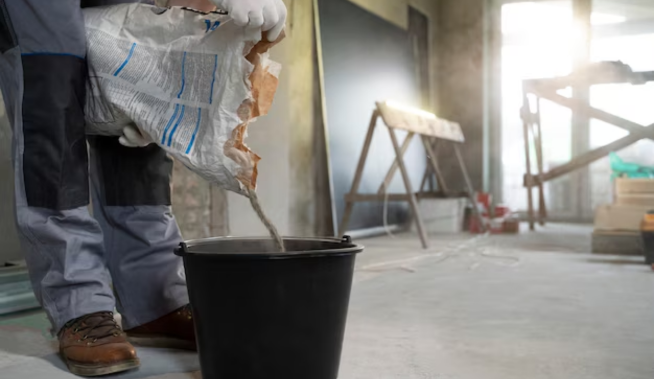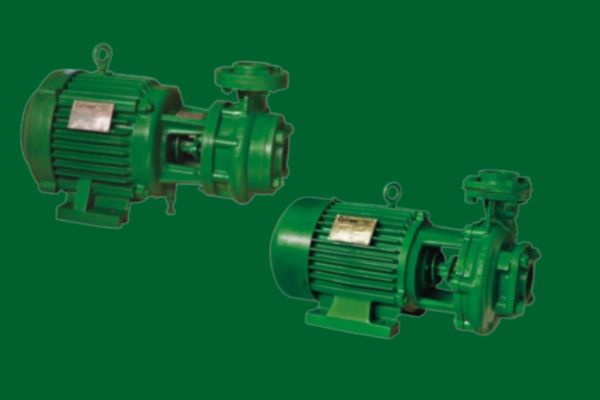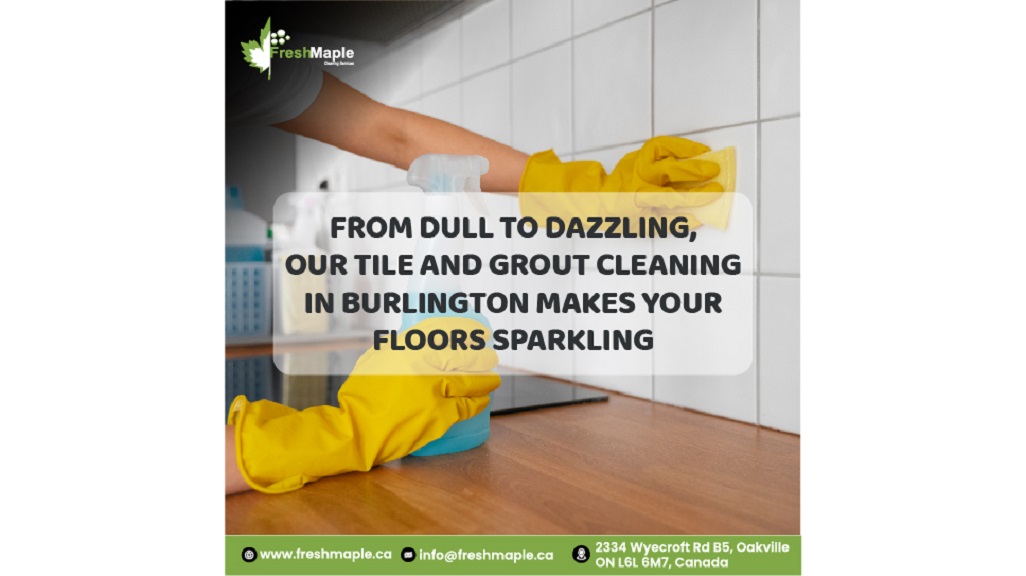When it comes to interior and exterior design, choosing the right materials for your floors and tiles is crucial to ensuring longevity, durability, and aesthetic appeal. Two important components in achieving a polished and functional space are floor coating and tile adhesive. These materials not only enhance the visual aesthetics of a room but also offer practical benefits, such as protection against wear and tear, increased resistance to moisture, and improved longevity of your flooring and tiling. In this blog, we’ll dive into the importance of both floor coatings and tile adhesives and explore how they can elevate the performance of your space.
What Is Floor Coating and Why Is It Important?
Floor coating refers to a layer of material that is applied to the surface of a floor to enhance its durability, resistance to chemicals, and appearance. There are various types of floor coatings available in the market, each suited to different needs, whether residential, commercial, or industrial. The right floor coating can protect your flooring from damage, make cleaning easier, and even prevent accidents by improving slip resistance.
Benefits of Floor Coating:
- Enhanced Durability: Floor coatings act as a protective barrier that helps prevent damage caused by wear and tear, scratches, spills, or even high foot traffic. With the right coating, your floor can withstand the demands of daily use for an extended period of time.
- Chemical Resistance: Certain floor coatings are designed to resist damage from harsh chemicals, making them ideal for industrial or commercial spaces where spills and chemical exposure are common.
- Moisture and Stain Protection: Floor coatings help protect floors from moisture, which can cause swelling or warping of wooden floors and damage to other materials like concrete. Additionally, they prevent stains from penetrating the surface, keeping your floor looking pristine for longer.
- Aesthetic Appeal: Floor coatings can improve the overall appearance of your floor, adding shine or matte finishes that align with your design preferences. You can even choose coatings that mimic natural materials such as stone or marble.
- Ease of Maintenance: Many floor coatings offer a smooth, non-porous surface that makes cleaning a breeze. Dirt, dust, and spills are easily wiped away, reducing the amount of time spent on upkeep.
Types of Floor Coatings:
- Epoxy Coatings: Epoxy is one of the most popular types of floor coatings, especially in commercial and industrial settings. It provides excellent chemical resistance, high durability, and a glossy finish. Epoxy is often used in garages, warehouses, and showrooms.
- Polyurethane Coatings: Polyurethane floor coatings offer superior flexibility and are ideal for areas subject to heavy foot traffic. They are also highly resistant to abrasion, making them perfect for both residential and commercial environments.
- Polyaspartic Coatings: These coatings are fast-curing and provide excellent protection against UV damage. Polyaspartic coatings are perfect for outdoor floors and can withstand extreme temperatures.
- Cementitious Coatings: These coatings are made from a combination of cement and polymers. They are often used to protect concrete floors in industrial and commercial environments and offer an effective solution for protecting surfaces from moisture and wear.
What Is Tile Adhesive and Its Role in Tiling Projects?
Tile adhesive is a specially formulated bonding material used to attach tiles to surfaces such as walls or floors. Unlike traditional adhesives, tile adhesives are designed to handle the weight and stress that tiles put on the substrate. Tile adhesives come in various types, each suited for different kinds of tiling projects, from residential bathroom floors to large commercial spaces.
Why Tile Adhesive Is Essential:
- Strong Bonding: Tile adhesive provides a solid and long-lasting bond between the tile and the surface it’s applied to. This ensures that tiles stay in place and don’t loosen or shift over time.
- Flexibility: Many tile adhesives offer flexibility, which is particularly useful for applications where there might be slight movement in the substrate, such as with concrete floors or in areas where the building is still settling.
- Water Resistance: Certain types of tile adhesives, especially those used in wet areas like bathrooms and kitchens, offer waterproof properties, which prevent moisture from seeping under the tiles and causing damage to both the tiles and the surface beneath.
- Prevents Cracking: Tile adhesive can help reduce the risk of tile cracking, especially in high-traffic areas or places where temperature fluctuations are common.
- Ease of Application: Tile adhesives are typically easy to apply, and they offer a faster and more efficient way to install tiles compared to traditional methods like using mortar.
Types of Tile Adhesives:
- Thin-set Adhesive: Thin-set adhesives are the most commonly used type for tile installation. They are easy to spread and apply with a trowel and work well for both wall and floor tiling applications. Thin-set adhesives come in both cement-based and modified versions.
- Mastic Adhesive: Mastic is an organic adhesive that is often used for indoor tile installations, especially in dry areas like living rooms or bedrooms. While it is easy to use, mastic is not as moisture-resistant as thin-set adhesives, so it is not suitable for wet areas like bathrooms or kitchens.
- Epoxy Adhesive: Epoxy adhesive is known for its superior bonding strength and resistance to chemicals, making it ideal for heavy-duty applications. This adhesive is particularly useful for commercial or industrial spaces where tiles need to withstand high levels of foot traffic and harsh conditions.
- Ready-Mixed Adhesive: Ready-mixed adhesives are convenient because they come pre-mixed and ready to use straight from the container. These adhesives are typically used for small-scale residential projects.
How Floor Coating and Tile Adhesive Work Together
When it comes to a flooring or tiling project, floor coatings and tile adhesives complement each other in providing both functionality and aesthetic appeal. Here’s how they work together:
- Preparing the Surface: Before applying either a floor coating or tile adhesive, the surface needs to be properly prepared. This may include cleaning, sanding, or leveling the floor to ensure that the adhesive or coating adheres correctly.
- Tile Installation: After the appropriate tile adhesive is applied, the tiles are carefully placed on the surface. Once the adhesive sets and cures, the surface is ready for additional treatment. If the floor is being coated after tiling, ensure that the adhesive is fully cured before applying the coating.
- Floor Coating Application: Once the tiles are secured and the adhesive is dry, a floor coating can be applied to protect the surface and enhance its appearance. The coating will not only protect the tiles but also help in making them more resistant to dirt, stains, and wear.
Choosing the Right Floor Coating and Tile Adhesive for Your Needs
When selecting the right floor coating and tile adhesive, it’s essential to consider the specific needs of your space. For instance:
- For Wet Areas: If you are tiling a bathroom or kitchen, choose tile adhesives with waterproof properties and floor coatings that can resist moisture and provide a non-slip finish.
- For High Traffic Areas: In spaces like offices, warehouses, or commercial environments, opt for floor coatings that offer superior durability and scratch resistance. Likewise, tile adhesives that can withstand heavy foot traffic should be used for tiling these areas.
- For Aesthetic Appeal: If aesthetics are important, choose floor coatings that match your desired finish, whether it’s a glossy, matte, or textured surface. Similarly, tile adhesive should complement the type of tile you are using, ensuring that it doesn’t affect the final appearance of the tiles.
Conclusion
Incorporating floor coatings and tile adhesive into your design not only enhances the look of your space but also adds significant value by improving the durability and longevity of the materials. With the right floor coating, you can protect your flooring from wear, moisture, and staining while achieving a sleek, easy-to-maintain surface. Similarly, tile adhesive ensures that your tiles stay firmly in place, providing a solid foundation for any tiling project. Whether you are renovating your home, upgrading your commercial space, or embarking on a new build, floor coating and tile adhesive are two critical elements that can contribute significantly to the quality and longevity of your investment.




